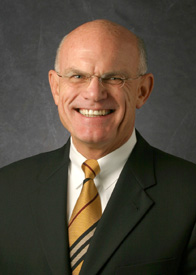 Hong Kong (HKSAR) - The Science Park had proven to be adept at not only bringing complementary businesses and facilities together, but also in incubating and nurturing innovators and entrepreneurs, the Commissioner for Innovation and Technology, Miss Janet Wong, said today (March 19). Speaking at the graduation ceremony of the Incubation Programme of Hong Kong Science and Technology Parks Corporation, Miss Wong said the Incubation Programme, from its inception in 1992, had always been an important part in assisting technology-based companies at the critical start-up stage. She said, "The programme has successfully incubated more than 230 start-up companies, over 180 of which are still in business today." Miss Wong pointed out that in the past seven years, incubatees and graduates had filed over 360 intellectual properties, including patents, trademarks and registered designs.
Hong Kong (HKSAR) - The Science Park had proven to be adept at not only bringing complementary businesses and facilities together, but also in incubating and nurturing innovators and entrepreneurs, the Commissioner for Innovation and Technology, Miss Janet Wong, said today (March 19). Speaking at the graduation ceremony of the Incubation Programme of Hong Kong Science and Technology Parks Corporation, Miss Wong said the Incubation Programme, from its inception in 1992, had always been an important part in assisting technology-based companies at the critical start-up stage. She said, "The programme has successfully incubated more than 230 start-up companies, over 180 of which are still in business today." Miss Wong pointed out that in the past seven years, incubatees and graduates had filed over 360 intellectual properties, including patents, trademarks and registered designs.
Over 160 international and local awards have been won by companies under the programme. Among them, six of the companies graduated today. In the same period, the graduates had obtained over 180 cases of government funding, and attracted over $665 million in "angel"/venture capital investment.
innovation DAILY
Here we highlight selected innovation related articles from around the world on a daily basis. These articles related to innovation and funding for innovative companies, and best practices for innovation based economic development.
InnoCentive Challenges featured at International Environmental Engineering Event
 I’m not sure when I first heard the term “The New Normal”. With the internet, it was easy enough to Google the term and, to my surprise, books, articles, and blogs have all laid claim to the phrase for some time. In fact, some declared the New Normal immediately after Y2K as a reflection of the connectedness of technology, markets, and people. Then again after the internet bubble burst, the term was brought back and now again referring to the new realities resulting from the Global Financial Crisis.
I’m not sure when I first heard the term “The New Normal”. With the internet, it was easy enough to Google the term and, to my surprise, books, articles, and blogs have all laid claim to the phrase for some time. In fact, some declared the New Normal immediately after Y2K as a reflection of the connectedness of technology, markets, and people. Then again after the internet bubble burst, the term was brought back and now again referring to the new realities resulting from the Global Financial Crisis.
The Economic Crisis is heralding a New Normal for Innovation that represents enormous opportunity for 21st century businesses, governments and society. This New Normal is powered by what some call Crowdsourcing and captured more broadly by the term Open Innovation.
An inside look at ESPN's Innovation Lab
What's Stopping Innovation?
 The other day, one of my colleagues asked me, "What exactly do you mean when you use the word 'innovation?'" Answering the question led to a productive discussion about what really inhibits innovation inside large organizations.
The other day, one of my colleagues asked me, "What exactly do you mean when you use the word 'innovation?'" Answering the question led to a productive discussion about what really inhibits innovation inside large organizations.
When I use the word innovation, I think of three interlocking components:
- Insight or inspiration suggesting an opportunity to do something different to create value
- An idea or plan to build an offering based on that insight or inspiration
- The translation of that plan into a successful business (in simple terms, commercialization)
Obviously, each of these components carries significant complexity, but more often than not, they cover the basics of innovation.
The senior leaders I talk to believe that the bulk of their innovation challenges lie in the first two components. I suspect this is because the third piece looks like execution, and of course, large organizations know all about execution. And yet, my field experience suggests that it's this third component, not the first two, that actually blocks innovation.
Oklahoma's OCAST positioned to bring innovation
 State research and development budgets were challenged last year by
an international recession but as I look across the nation, a handful of
innovation-based state agencies continue to make progress even in
difficult times. The Oklahoma
Center for the Advancement of Science and Technology is one of
those.
State research and development budgets were challenged last year by
an international recession but as I look across the nation, a handful of
innovation-based state agencies continue to make progress even in
difficult times. The Oklahoma
Center for the Advancement of Science and Technology is one of
those.
OCAST has a robust pipeline of programs that includes applied research, health research, small-business innovation research (SBIR), research and development intern partnerships, nanotechnology, plant research, manufacturing excellence and technology commercialization. This pipeline is vital to the infrastructure that can help transform a state’s economy.
Turkey’s next challenge: the development of the ‘intrapreneur’
 As Turkey begins to recover from some of the worst effects of the global economic downturn, it could be time to examine how a new brand of entrepreneur could help to sustain the revival of confidence.
As Turkey begins to recover from some of the worst effects of the global economic downturn, it could be time to examine how a new brand of entrepreneur could help to sustain the revival of confidence.
According to Johan Stael von Holstein of the
global business incubator IQube, speaking at the World Entrepreneurship
Forum, “Every problem will eventually be solved by an entrepreneur.” But
given the fact that so many of our current problems were generated by
major international corporations, how can entrepreneurship seriously be
considered a solution to them? The answer, according to the dean of the
EM Lyon business school, Patrice Houdayer, lies in the development of
the entrepreneurial spirit within the structures of these very
corporations.
“I believe that entrepreneurship and entrepreneurial leadership, in particular, are possibly more important within large businesses than they are within smaller companies,” he says. “In uncertain times like these, large organizations need to be as flexible as possible, ready to change and develop rapidly to accommodate the shifting needs of their customers and the market as a whole. But many only pay lip service to ‘intrapreneurship,’ the internal version of classic entrepreneurship, or even stifle it, because they fear losing control.”
America’s Real Dream Team.......Look to our High Schools
 Went to a big Washington dinner last week. You know the kind: Large hall; black ties; long dresses. But this was no ordinary dinner. There were 40 guests of honor. So here’s my Sunday news quiz: I’ll give you the names of most of the honorees, and you tell me what dinner I was at. Ready?
Went to a big Washington dinner last week. You know the kind: Large hall; black ties; long dresses. But this was no ordinary dinner. There were 40 guests of honor. So here’s my Sunday news quiz: I’ll give you the names of most of the honorees, and you tell me what dinner I was at. Ready?
Linda Zhou, Alice Wei Zhao, Lori Ying, Angela Yu-Yun Yeung, Lynnelle Lin Ye, Kevin Young Xu, Benjamin Chang Sun, Jane Yoonhae Suh, Katheryn Cheng Shi, Sunanda Sharma, Sarine Gayaneh Shahmirian, Arjun Ranganath Puranik, Raman Venkat Nelakant, Akhil Mathew, Paul Masih Das, David Chienyun Liu, Elisa Bisi Lin, Yifan Li, Lanair Amaad Lett, Ruoyi Jiang, Otana Agape Jakpor, Peter Danming Hu, Yale Wang Fan, Yuval Yaacov Calev, Levent Alpoge, John Vincenzo Capodilupo and Namrata Anand.
No, sorry, it was not a dinner of the China-India Friendship League. Give up?
O.K. All these kids are American high school students. They were the majority of the 40 finalists in the 2010 Intel Science Talent Search, which, through a national contest, identifies and honors the top math and science high school students in America, based on their solutions to scientific problems. The awards dinner was Tuesday, and, as you can see from the above list, most finalists hailed from immigrant families, largely from Asia.
IHE: Accelerating venture creation and building on mutual strengths in experimental business labs
 This paper articulates the opportunity of using an experimental business laboratory approach as a means of accelerating the creation, incubation and testing of new venture ideas. Such a strategy leads to the establishment of a micro-ecosystem of aspiring entrepreneurs and others in a business laboratory environment. The goal is to create a mini idea-supercollider, in which a microscopic ‘De Medici Effect’ (Johansson, 2004) can be achieved, with aspiring entrepreneurs with different ideas, experiences and disciplines meeting in a spirit of open innovation – the sum of the whole being much greater than the sum of the individual parts. The development of an ecosystem for idea generation and rapid testing using business simulation tools can accelerate the creation, mobilization and diffusion stages of the knowledge lifecycle (Birkinshaw and Sheehan, 2002) in a knowledge- driven entrepreneurship venture, while de-risking potential ventures before significant capital is applied.
This paper articulates the opportunity of using an experimental business laboratory approach as a means of accelerating the creation, incubation and testing of new venture ideas. Such a strategy leads to the establishment of a micro-ecosystem of aspiring entrepreneurs and others in a business laboratory environment. The goal is to create a mini idea-supercollider, in which a microscopic ‘De Medici Effect’ (Johansson, 2004) can be achieved, with aspiring entrepreneurs with different ideas, experiences and disciplines meeting in a spirit of open innovation – the sum of the whole being much greater than the sum of the individual parts. The development of an ecosystem for idea generation and rapid testing using business simulation tools can accelerate the creation, mobilization and diffusion stages of the knowledge lifecycle (Birkinshaw and Sheehan, 2002) in a knowledge- driven entrepreneurship venture, while de-risking potential ventures before significant capital is applied.
Download the PDF
RICH BENDIS, EDITOR OF INNOVATION DAILY SERVES ON THE EDITORIAL BOARD OF INDUSTRY AND HIGHER EDUCATION ( IHE ).
Going Global, Stateside
 Training to communicate across cultures has long been part of the preparation for executives moving overseas to work. But now, the training is increasingly for employees who may never leave the country, yet will work closely with companies and people around the world.
Training to communicate across cultures has long been part of the preparation for executives moving overseas to work. But now, the training is increasingly for employees who may never leave the country, yet will work closely with companies and people around the world.
“Whether a multinational or a start-up business out of a garage, everybody is global these days,” said Dean Foster, president of Dean Foster Associates, an intercultural consultancy in New York. “In today’s economy, there is no room for failure. Companies have to understand the culture they are working in from Day 1.”
Mr. Foster recounted how an American businessman recently gave four antique clocks wrapped in white paper to a prospective client in China. What the man did not realize, he said, was that the words in Mandarin for clock and the number four are similar to the word for death, and white is a funeral color in many Asian countries. “The symbolism was so powerful,” Mr. Foster said, that the man lost the deal.
The manageability of innovation
 “Innovation” means different things to different people but, generally, it involves the application of novel ideas, products or processes for some purpose. But even if we can agree on “what” it is, do we understand “how” innovation happens?
“Innovation” means different things to different people but, generally, it involves the application of novel ideas, products or processes for some purpose. But even if we can agree on “what” it is, do we understand “how” innovation happens?
There is a significant change taking place in the way that the process of innovation is understood. We can put this in the context of developments in the manageability of other areas of business activity in recent times.
“Selling” in the 1970s
Until about the 1970s in most organisations, “selling” was done by salesman who used skills with which they were born, rather than trained; they had a reputation for being overly friendly and free spirits! The concepts of describing the process of “selling”, of managing these people through the process and of training others who were not “born salesmen” to follow it were not given much credibility. But then, at about that time, came the realisation that the activities of selling do follow patterns and we can identify stages and describe sales funnels, measure what is happening, and so on.
Politicians have been misled by innovation myths
There is one simple science policy issue that has united the main political parties over the past three decades: how to squeeze more profit out of Britain's world-class science.
Margaret Thatcher, Gordon Brown and the prime
ministers in between have been passionate about the central role that
science should play in a modern economy.
So it comes as a
surprise to see the chronic policy blunders identified by a recent
report from the University of Cambridge.
Cambridge is seen as a beacon of how to innovate and has spawned
new sectors of industry in printing technology, semiconductors, wireless
technology, software and scientific instruments, for example.
Exploding
the Myths of UK Innovation Policy argues from the example of
Cambridge that government thinking has been heavily influenced by three
myths:
- University research is the key source of technology and innovation for new hi-tech firms;
- Venture capital is the primary source of finance;
- The best way for Government to support technology development in companies is by funding multi-partner research collaborations between universities and private sector firms.
Innovation Lags In China
![]() Institutional barriers still inhibit China despite tremendous growth in science and technology.
Institutional barriers still inhibit China despite tremendous growth in science and technology.
China has witnessed tremendous growth in science and technology (S&T) inputs in terms of university students, research and development (R&D) investments and S&T workforce:
University students. On the input side, investment by the state in higher education led to an approximate tenfold increase from 2 million in 1991 to 19 million by 2007. Gross enrollment rates of 18-22 year olds rose within around 15 years from 3.5% early in the 1990s to 22%. The 15-year (2006-2020) Medium-to-Long-term Plan for the Development of S&T (MLP) aims to increase gross enrollment rates to 25% by 2020. Half of China's university students major in science and engineering subjects.
Launchpad LA – More Details Revealed
 Full press release with more details is here.
We will be selecting 10 startup companies to participate. There is no
cost but you must physically be based in or move to Los Angeles for the
6 months of the program. Applications are due April 6th, 2010, the
form is on the website and the Twitter address is @launchpadlad
Full press release with more details is here.
We will be selecting 10 startup companies to participate. There is no
cost but you must physically be based in or move to Los Angeles for the
6 months of the program. Applications are due April 6th, 2010, the
form is on the website and the Twitter address is @launchpadlad
When I kicked off Launchpad LA a year ago I had a few objectives:
- Create an ecosystem where all Southern California VC’s had the chance to work together more actively outside of the boards on which we mutually sit
- Find the best and brightest next generation of entrepreneurs and help them to be more successful
- Encourage the most successful LA tech entrepreneurs who had previously started companies to get involved as mentors, instructors or just informal advisors
- Help these companies get funded and let them know that if they stayed in LA there was an ecosystem to support them
It was inspired somewhat by a comment that Matt Coffin (founder of LowerMyBills) made at a technology event hosted by Jason Nazar. He spoke about his experiences in the dot com crash of the early part of the century where no VC’s would give him money. He had a pile of debt and covenants that made him vulnerable if the debt holders wanted to play rough. He was able to speak with a successful entrepreneur who told him how to restructure the debt (essentially by increasing their warrant coverage) and that was enough to seal the deal. The rest is history. He was able to raise money from a VC in Minneapolis called Split Rock, grow the business to over $200 million in sales and sell to Experian for nearly $380 million. I hope he’s OK with my telling this wonderful story as he told it publicly.
Safety Issues Linger as Nuclear Reactors Shrink in Size
 MOSCOW — When the Soviet Union introduced its Alfa class submarine — at the time, the world’s fastest — the subs were the bane of American sailors. Now, the reactors that powered those submarines are being marketed as the next innovation in green power.
MOSCOW — When the Soviet Union introduced its Alfa class submarine — at the time, the world’s fastest — the subs were the bane of American sailors. Now, the reactors that powered those submarines are being marketed as the next innovation in green power.
Environmentalists say the technology is outdated and potentially dangerous, and marketing it as green energy is an abuse of nuclear power’s good green name.
The Russians are not alone in pushing the idea that the next generation of nuclear reactors should have more in common with the small power plants on submarines than the sprawling installations of today.
The kinds of marine reactors the Russians are promoting, though, also happen to create a byproduct — used fuel — that no one knows how to handle. Right now, that spent fuel is being stored at naval yards in the Russian Arctic.
The Collapse of Social Media?
 Excessive weight on things not designed to carry lots of weight collapse. The same is true about current uses of social media and all things supporting its use, it may collapse.
Excessive weight on things not designed to carry lots of weight collapse. The same is true about current uses of social media and all things supporting its use, it may collapse.
Why am I saying this? It is simple, most of the people on Twitter don’t use Twitter regularly. Twitter growth is slowing down. Only 30% of the members actually do it. Advertising on Twitter gets the same dismal response rates as everywhere else, 3% or less.
While the stats show usage growth of other sites like Facebook and Linkedin the corresponding click through rates on ads placed on these sites is static or decreasing. Most of the people using search don’t click on the ads. Advertising has been the foundation holding up all things social and sooner or later it will collapse.
Knowledge Cost by the Hour?
 A prospective client asked “what do you charge by the hour?”. My response…”I don’t”. The prospect then asked “then how do you determine how much to charge me?”. My response “By the value you desire me to deliver using my knowledge”.
A prospective client asked “what do you charge by the hour?”. My response…”I don’t”. The prospect then asked “then how do you determine how much to charge me?”. My response “By the value you desire me to deliver using my knowledge”.
Knowledge needed to ring up sales at a cash register is different than knowledge needed to engage more customer that will ring the cash register or reduce lost productivity which improves business efficiency. Which has more value?
If your business is wasting time, effort and energy “producing things” and causing customers to waste time, effort and energy to interact with your business then you are wasting money. If someone had the knowledge required to help you reduce the waste and improve productivity how much would it be worth?
NASA Offers $50,000 for ‘Game Changing’ Space Innovation
 President Barack Obama’s new space policy puts a lot of emphasis on the development of “game changing” technology that will allow us to explore and settle the cosmos.
President Barack Obama’s new space policy puts a lot of emphasis on the development of “game changing” technology that will allow us to explore and settle the cosmos.
The approach will get an early test run next month during the 2010 Rice Business Plan Competition in House. NASA’s Johnson Space Center recently announced the addition of a $50,000 “Game Changer” Commercial Space Innovation Prize to the contest.
“The new $50,000 NASA ‘Game Changer’ Commercial Space Innovation Prize will recognize the team’s business plan with the best idea related to commercial space innovation,” said David Leestma, director of the Advanced Planning Office at NASA’s Johnson Space Center. “The award encourages the identification and development of new breakthrough technologies and business models in the commercial space market or market creation to realize this value.”
Does the Rise of Temp Jobs Mean the Recession is Really Over?
The ranks of temporary help workers have increased for the past five months in a row, according to recently released Department of Labor figures. The Wall Street Journal reports that the number of Americans employed in temporary jobs rose 47,500 in February to 2 million—but at the same time, overall employment declined.

While staffing firms nationwide are reporting increased business as firms prepare for economic recovery, they say hiring is still nowhere near pre-recession levels.
In past recessions, temporary hires have been a leading indicator that companies are getting ready to hire permanent employees. The Associated Press reports that after the recession of 1990-1991, for example, temporary hiring picked up in August 1991 and permanent hiring increased almost immediately after that. After the recession of 2001, temporary hiring increased for three straight months in summer 2003, and permanent hiring began in the fall.
But things may be different this time around. At least right now, it doesn’t appear that many temporary employees have a chance of becoming permanent hires.”I think temporary hiring is less useful a signal than it used to be,” John Silvia, chief economist at Wells Fargo, told the AP. “Companies aren’t testing the waters by turning to temporary firms. They just want part-time workers.”
The 20 Hot New York City Startups You Need To Watch
 The New York digital scene has had a major renaissance in recent years.
The New York digital scene has had a major renaissance in recent years.
We've written a lot about this, as well as the differences between New York and the Valley and the reasons many entrepreneurs have foregone the west coast and instead launched their startups here.
And now it's time to focus on the companies themselves.
In the past few weeks, we've consulted with New York VCs, entrepreneurs, and tech journalists, and compiled a list of NYC's current rising stars.
Spawning starfish washed up on Devon beach
 Thousands of starfish have been washed up on a Devon beach after becoming exhausted spawning.
Thousands of starfish have been washed up on a Devon beach after becoming exhausted spawning.
A line of the creatures stretched for more than a mile across the pebbles at Budleigh Salterton.
One expert said the process of reproduction had left the starfish "tired out" and they had been left "susceptible" to tides and the wind.
Similar events happen once or twice a year in the UK, but it is the first time for Budleigh Salterton.



